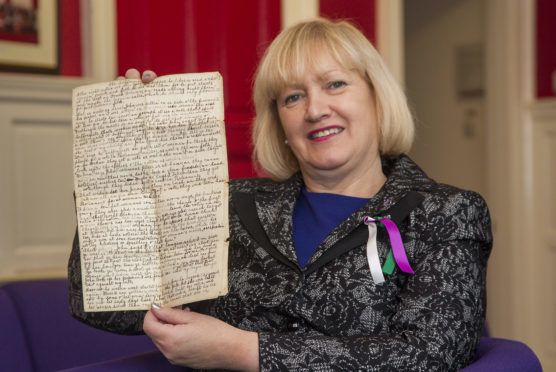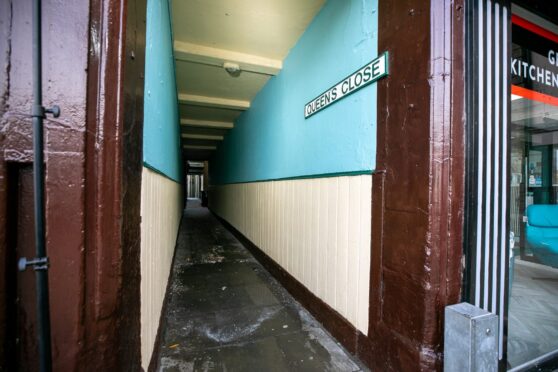An Angus councillor has unearthed a fascinating insight into men’s views on the suffragists as the nation commemorated the centenary of some women winning the right to vote.
Brenda Durno, SNP member for Arbroath and East Lunan, has been so inspired by an essay written by her great-grandmother in 1904, she is hoping to donate it to a museum in the north east.
The amusing reflection was written in the Doric language by Isabella Moir, a 12-year-old pupil at Belhelvie School in Aberdeenshire.
She was the eldest of 10 children and had two sisters and seven brothers.
Councillor Durno said: “The celebration for the 100 years since women won the right to vote made me think of the essay.
“My great grandmother was born in September 1892 and died in May 1992.
“She latterly lived in Potterton with my aunt and uncle who ran the shop there and I found the essay when she died.”
Mrs Durno chose to enter local politics in the footstep of her father, the SNP councillor Alex Shand, but admitted her great-grandmother was a Liberal supporter.
“She was right into politics and was a great friend of Lord Tweedsmuir – the SNP wasn’t around then.”
The essay relates to a conversation between a brother and sister as he reads a newspaper article on ‘The Suffragists’.
As he works his way through the article, his views become apparent.
He berates the efforts of the “limmers of suffragists” claiming “weemans place is at hame”
It reads: “They canna mak an men their men’s sarks, keep a clean fireside an have a vote.
“Gie then an inch an they wid tak an ill (mile).”
The essay goes on to say there a was a time when women were happy “tae tak the chance o’ the first man that socht them, an thankful tae leave the voting an the rulin o the nation tae him”.
It was on February 6, 1918 that women aged over 30, those who owned property or had a university education were granted the right to vote through the Representation of the People Act.
Mrs Durno is hoping to donate the essay to a museum which specialises in the Doric and would welcome suggestions as to who to contact.










